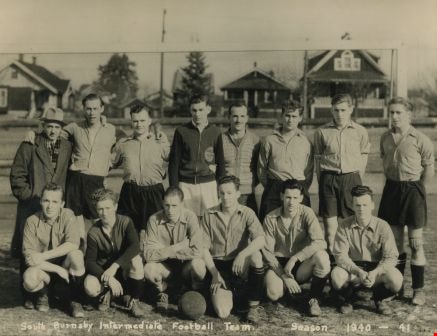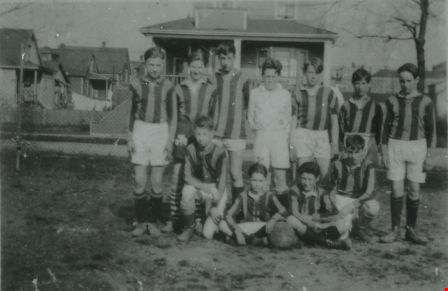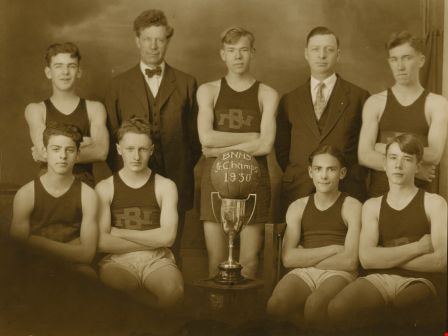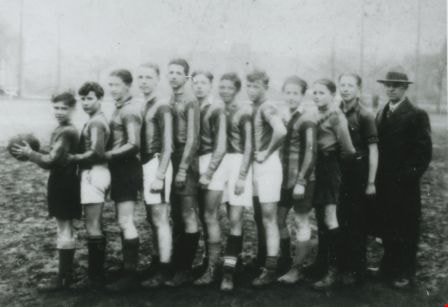The history of Burnaby, an important city in British Columbia, Canada, is deeply rooted in the region’s development over the past centuries. Burnaby was established in 1891 and was incorporated as a municipality a year later, in 1892. This development occurred almost 20 years before the confederation of Canada and was closely linked to the Fraser Canyon Gold Rush of 1858, which brought over 30,000 fortune seekers, including many American miners, to British Columbia.
The city’s name has an intriguing origin. A freemason politician named Robert Burnaby, who was in his 20s at the time, discovered a lake in the wilderness of British Columbia, which was later named Burnaby Lake. This lake would become the center of what is now the third-largest city in British Columbia. The area around Burnaby Lake was named after Robert Burnaby by Richard Clement Moody, and when this area was later incorporated in 1892, the new municipality adopted the name Burnaby. This name has since been commemorated in various landmarks within the city, including an island, a narrows in Haida Gwaii, a street, a hill, and a park named after Robert Burnaby.
Before its incorporation, the area that is now Burnaby was mostly dense forest with a small number of settlers. The transformation of this area into the thriving city of today required the convergence of numerous developmental factors over time.
Initially, Burnaby was a sparsely populated rural district that developed as an agricultural area, supplying nearby markets. Over time, it transformed into a residential community, primarily serving the workers of Vancouver and New Westminster. This transition was followed by significant industrial development and the construction of large wholesale and retail outlets, leading to ongoing urbanization in recent years.
Burnaby’s history is a testament to the dynamic changes and growth experienced by many cities in British Columbia, evolving from a rural settlement into a bustling urban center.
Sport in Burnaby: A Focus on Soccer
In Burnaby, the roots of soccer trace back to its informal beginnings, where the game was primarily played as a pickup sport by both adults and children. This informal nature of the sport allowed it to become a fabric of the community, fostering a love for the game among residents of all ages.
For a significant period, soccer in Burnaby was characterized by adult soccer teams, while children often engaged in the sport within the confines of their school playgrounds and local streets. School teams played a pivotal role in nurturing young talent. South Burnaby High School and Gilmore Avenue School had their soccer teams, which were central to the development of the sport among youth.
One notable milestone in the history of soccer in Burnaby was the formation of an All-Stars soccer team in 1931.
This team was composed of students from Gilmore Avenue, Kitchener Street, and Capitol Hill Schools, showcasing the emerging talent and passion for soccer among the young population. Additionally, Burnaby North High School made its mark by becoming soccer champions in 1930, further cementing the importance of school soccer teams in the development of the sport in the city.
Children in Burnaby often learned soccer by playing in school and on the streets, where the informal play allowed them to develop their skills and foster a love for the game. This grassroot level engagement was crucial in embedding soccer into the city’s cultural fabric.
Adult soccer clubs in Burnaby were predominantly formed based on community, ethnic backgrounds, or occupational groups. Notably, teams like those comprised of firefighters, police officers, and other worker groups began to form, bringing together individuals with shared backgrounds or professions. These clubs not only provided a platform for competitive play but also strengthened community bonds and promoted a sense of belonging among its members.
This early phase of soccer in Burnaby, with its emphasis on community and informal play, laid the foundation for the sport’s growth and popularity in the city. It was a period that saw soccer evolving from a casual pastime to an organized sport, with the establishment of more structured clubs and teams.
Soccer’s Boom in Burnaby During the 1950s and 1960s
During these decades, numerous adult soccer clubs were established, reflecting the growing enthusiasm for the sport in the community. Among these new clubs was the Burnaby Wallace soccer club, which became a prominent name in the local soccer scene.
A pivotal moment in the history of soccer in Burnaby was the formation of the Wesburn Community Association in 1949. This association was initiated by a group of local citizens with a vision to establish a neighborhood park in the community. Once the park was established, the Association took an active role in promoting sports and community activities. It began sponsoring children’s softball and soccer events, as well as square dancing and adult soccer games. This initiative played a significant role in making sports, particularly soccer, more accessible to the residents of Burnaby, both young and old.
Another key development in the local soccer landscape was in 1956, when members of the Cliff Avenue United Church founded a soccer team. This initiative symbolizes the growing reach of soccer in the community, extending into various social and community groups.
The 1950s and 1960s were transformative years for soccer in Burnaby. The sport was no longer just a casual, informal activity but was becoming an organized and integral part of the community’s social fabric. The establishment of new clubs and community-backed soccer initiatives made the sport more accessible to a broader section of the population. This period saw soccer evolving from a niche interest into a mainstream sport, with increasing participation from all segments of the community. As soccer clubs and associations grew, they not only fostered athletic talent but also strengthened community bonds, making soccer a unifying force in Burnaby.
Swangard Stadium, a multi-purpose stadium located in Central Park, Burnaby, British Columbia, has played a pivotal role in the soccer history of Burnaby. Opened on April 26,
1969, with a seating capacity of 5,288, the stadium has primarily been used for soccer, alongside rugby, football, and athletics.
In
1986, the city of Vancouver launched a professional soccer team, the Vancouver 86ers (now known as the Whitecaps), who began playing in
1987. Swangard Stadium became their home pitch, serving in this capacity until the team’s last season at the stadium in
2010. This was when the club joined
Major League Soccer (MLS) in
2011. Due to Swangard Stadium’s limited capacity and inability to meet MLS standards, plans to renovate and expand it were proposed but ultimately fell through, leading the Whitecaps to move to BC Place Stadium.
Swangard Stadium has been a host for significant soccer events, including the 2007 FIFA U-20 World Cup and the 2002 FIFA U-19 Women’s World Championship. Its capacity was temporarily increased to 10,000 for these events, attracting crowds exceeding this number and showcasing the stadium’s ability to host large-scale international soccer events.
Swangard Stadium’s role in the development and popularization of soccer in Burnaby has been substantial. It has provided a venue for both local and international soccer events, contributing to the growth of the sport in the city and offering a stage for local teams to showcase their talent. This stadium stands as a testament to Burnaby’s commitment to promoting and nurturing soccer, from local club matches to hosting events of global significance.
Moving into the 2010s and 2020s, a significant shift occurred in the landscape of soccer in Burnaby, marked by the rise of soccer academies. These academies have played a crucial role in the development of young soccer players in the city.
The Rise of Soccer Academies in Burnaby
During this period, soccer academies such as SEFA, Sports Focus, and many others emerged, introducing new mentalities, philosophies, and approaches to player development. These academies brought a focus different from traditional soccer clubs, emphasizing specialized training, individual skill development, and a more holistic approach to nurturing young talents. Their impact has been profound, offering young players in Burnaby more diverse opportunities to develop their skills, understand the game, and prepare for competitive and professional levels of play. These academies have become key players in the soccer scene in Burnaby, contributing significantly to the evolution and growth of the sport in the community.
The evolution of soccer in Burnaby in the 2010s and 2020s was further accelerated with the establishment of the
Academy Super League (ASL). This league, where various academies competed against each other, quickly became one of the most competitive leagues for ages U7-U13 in British Columbia, Canada. The ASL facilitated a platform for young talents from different academies to showcase their skills in a highly competitive environment.
Games in the ASL are held in numerous soccer fields across the Greater Vancouver area, including Burnaby, highlighting the region’s vibrant soccer culture. The prominence of soccer academies in Burnaby has become an integral part of the city’s soccer history. These academies are not just centers for learning and development; they have become vital stepping stones for young players aspiring to join higher levels of play, including teams like the Vancouver Whitecaps. The impact of these academies on the overall soccer landscape in Burnaby has been significant, contributing to the nurturing of skilled and competitive players who are making their mark in the wider soccer community.




